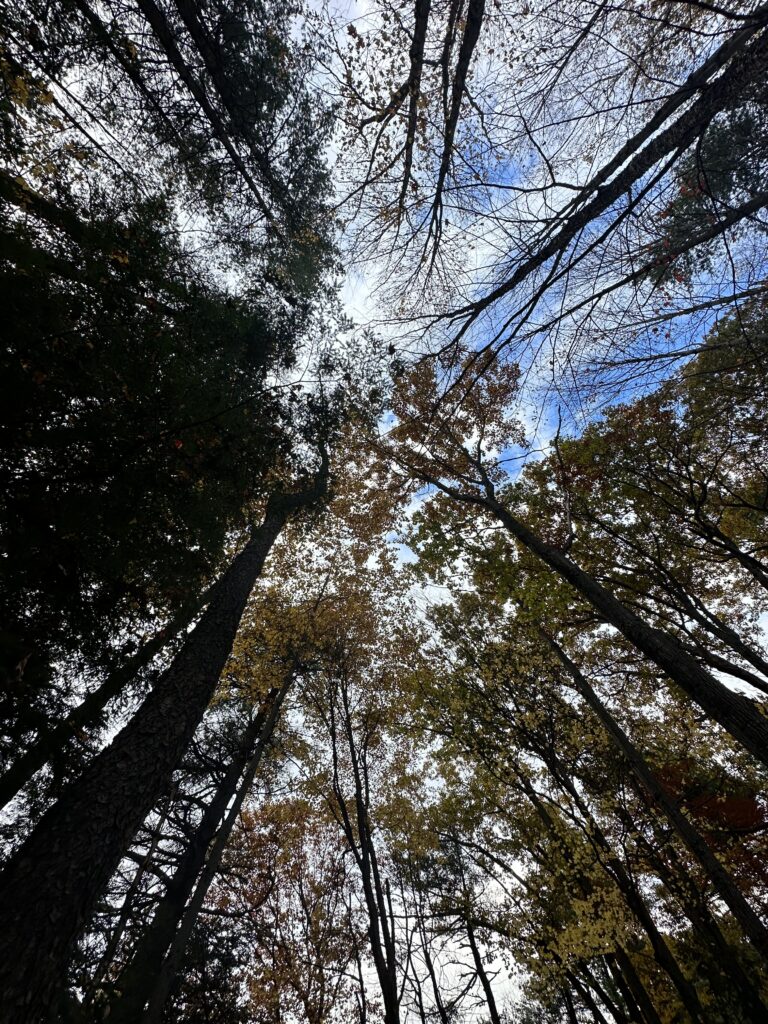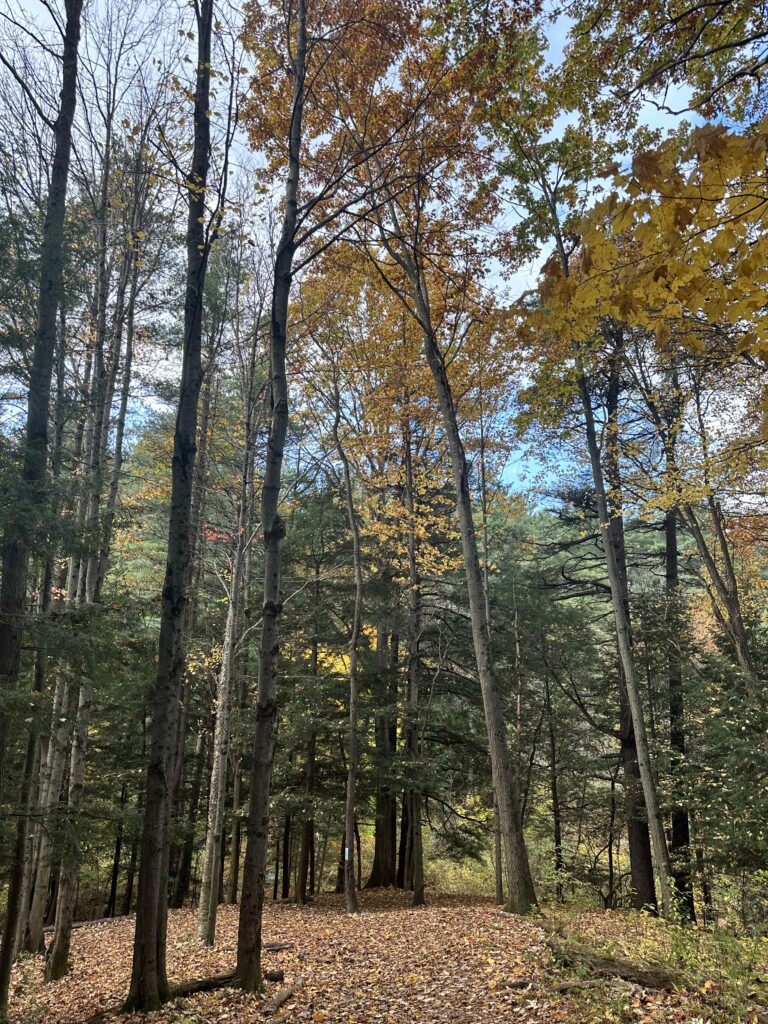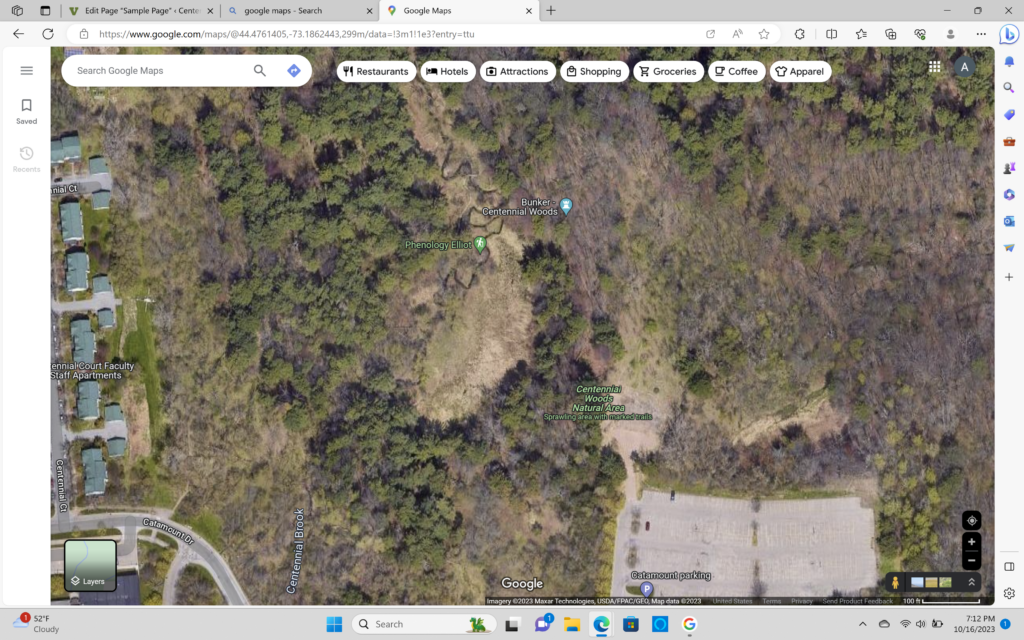How to get there? Starting at UVM campus by the water tower. You will follow Carrigan Drive, cross East Ave, pass campus police station then as you see a curve in the road. A green sign that says Centennial Woods Natural Area. This is the entrance of trail head.
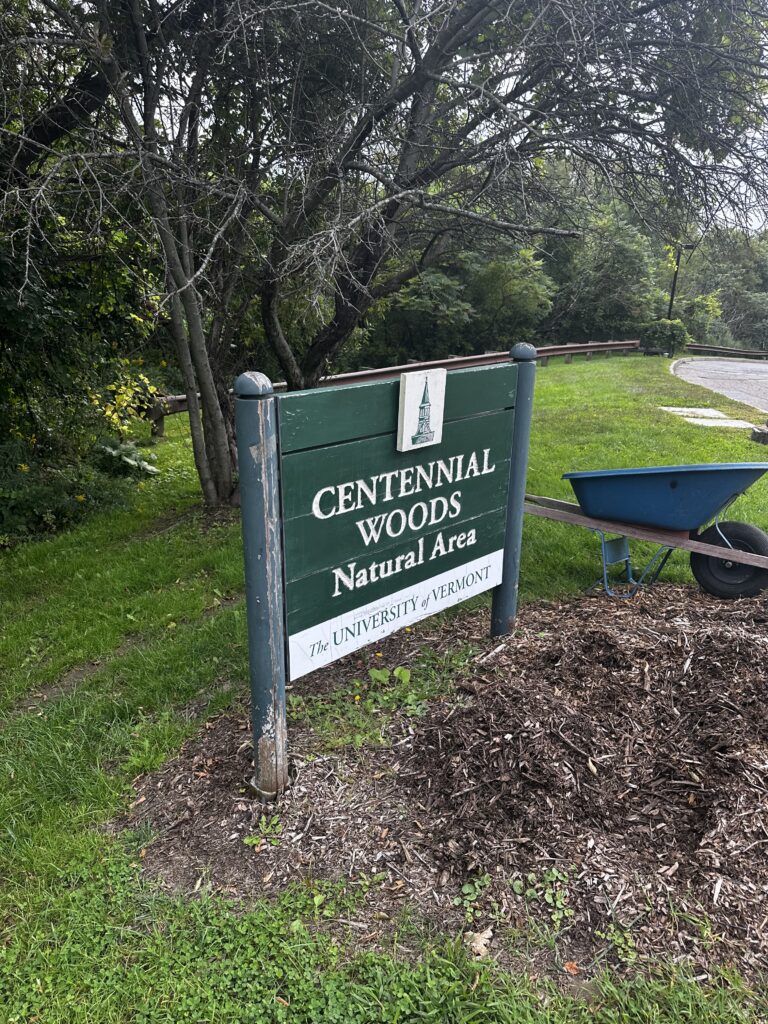
In Centennial Woods is a particular spot that I will be focusing on its phenology. So, to arrive at this spot. Follow the trail the goes straight. Until the first intersection. Take the left trail, with poison ivy sign warning. You will walk on boards then eventually cross a little bridge. Once you cross the bridge and few hundred feet forward a large, cleared area of forest floor is exposed. If you are in this open area with trails darting off in multiple direction, then you have arrived at the spot.
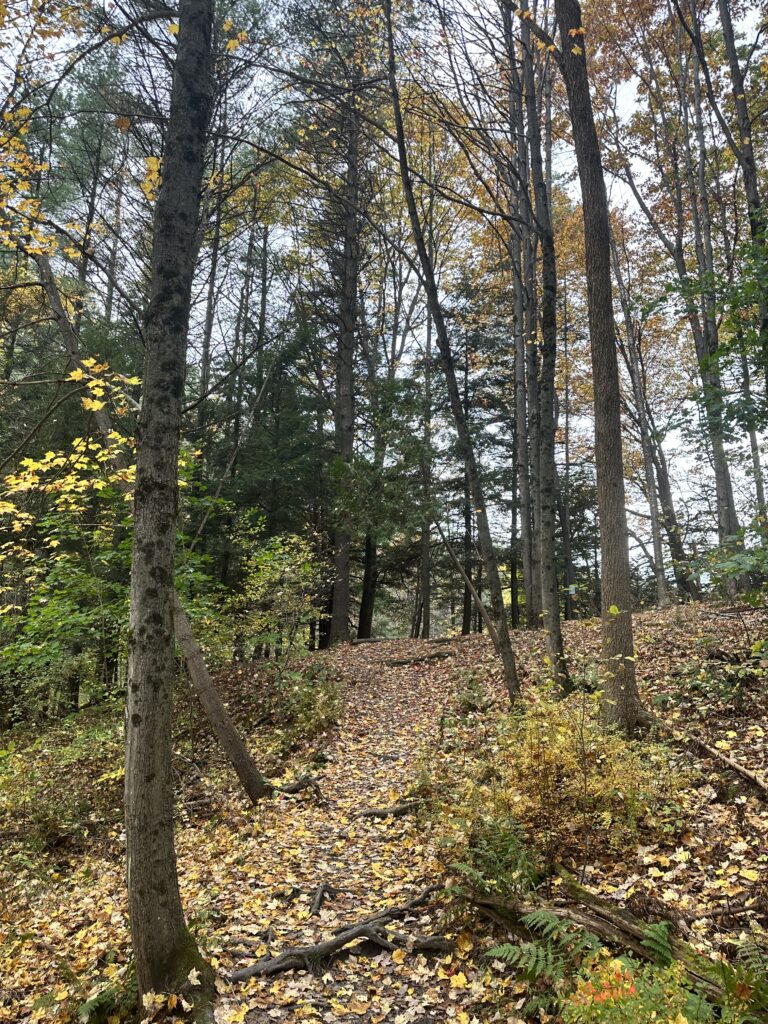
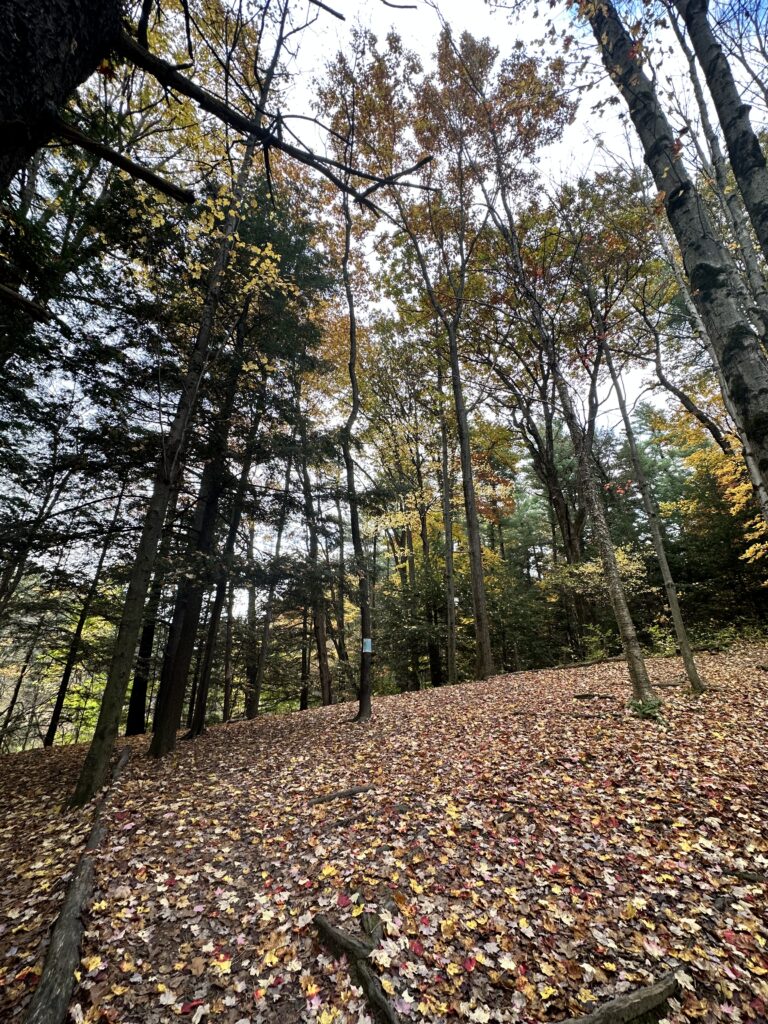

Why I choose this spot?
This spot in particular held a somewhat magical feeling. With the opening in the woods, and still shaded by the diverse canopy it offered something to hikers and visitors. When you begin the hike it’s a good enough time to stop and take in the natural area. Every time I visit, I always stop and stare up at the canopy that covers this circle of fallen pine needles layering the dirt. It really is kind of magical.
What’s the vegetation like?
The first hint of what type of trees and or vegetation grow in this spot, is right under your feet. Dried pine needles cover the dirt creating a patted layer to walk on. So, with this information you can guess there are coniferous trees. There is also a mix variety of deciduous trees that past leaves litter the ground too. Where the trees grow in the fertile soil. Ferns cover the ground loving the shade of the trees above them. In my opinion, the prettiest and softest type of vegetation, moss. Moss grows on the living trees and the fallen decaying ones. There is so much life growing as one sometimes you miss the overall change.
Common Woody Plants Found
- Northern White Cedar
- Paper Birch
- Red Maple
- Sugar Maple
- American Beech
- Green Ash
